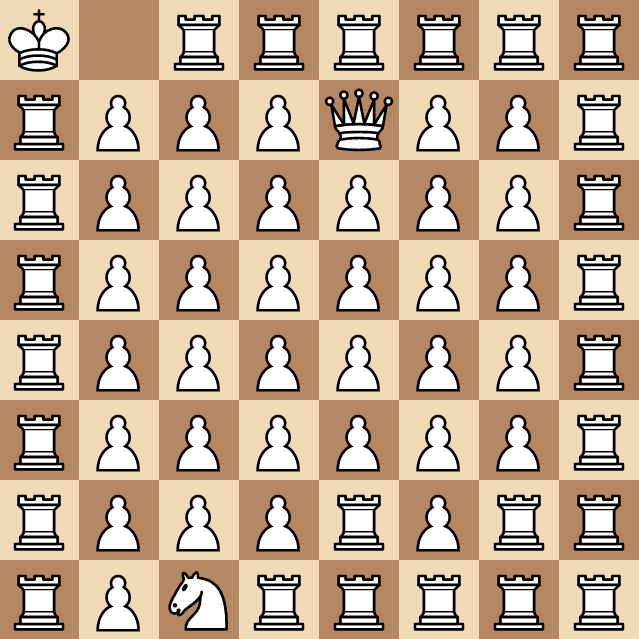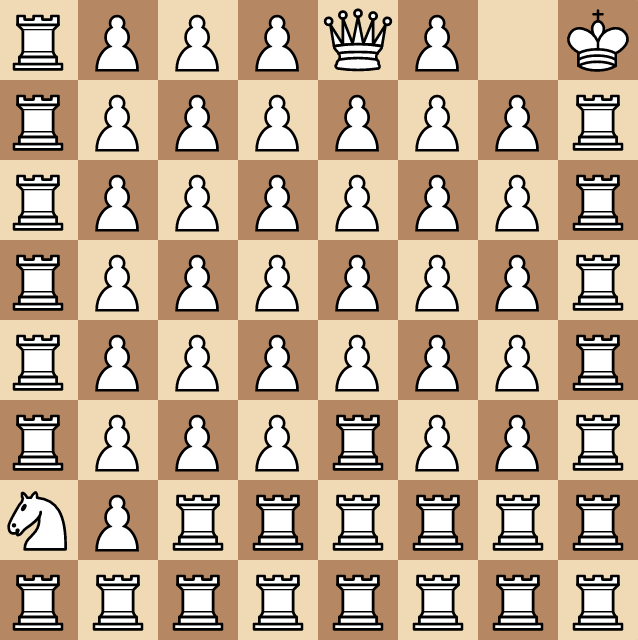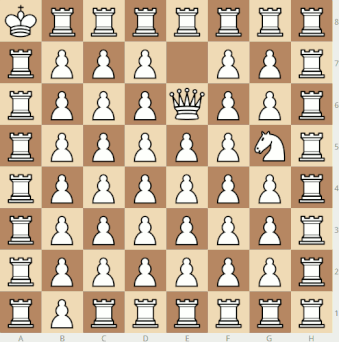My solution has: a
181 moves (certainly suboptimal) - Note that it is the same as Johnathan Allan's solution (see his for a gif of the solution), I made an arithmetic error doing it by hand and not checking with a computer (Don't believe me? Check the revision history!).
I will use P to denote pawn for nice formatting (sorry chess fans) and instead of writing multi-move chains of sliding the same type of piece in a line I will just put the start of the chain, the end of the chain and the number of moves between in brackets.
The key part is the start:
Rh3-e7(9 moves) For example, this denotesRe8-e7,Rf8-e8,Rg8-f8, etc. round toRh3-h4.
Ng5-e3(1 move)
Pg2-g5(3 moves)
Rg1-g2(1 move)
Nh3-g1(1 move)
Re7-h3(9 moves)
Qe6-e7(1 move)
Pe2-e6(4 moves)
Ng1-e2(1 move)
Rc1-g1(4 moves)
Ne2-c1(1 move)
Rb8-e2(17 moves)
This gives:
The position shown here after 52 moves.
This is the brute force part:
Ka8-b8(1 move)
Ra2-a8(6 moves)
Nc1-a2(1 move)
Rc8-c1(17 moves)
Kb8-c8(1 move)
Pb1-b8(7 moves)
Rd8-b1(17 moves)
Kc8-d8(1 move)
Pc2-c8(6 moves)
Re8-c2(16 moves)
Kd8-e8(1 move)
Pd2-d8(6 moves)
Rf8-d2(14 moves)
Ke8-f8(1 move)
Qe7-e8(1 move)
Pe3-e7(4 moves)
Rg8-e3(13 moves)
Kf8-g8(1 move)
Pf2-f8(6 moves)
Rh8-f2(8 moves - note the shortcut viag2)
Kg8-h8(1 move)
This gives the final position of:
This! (after another 129 moves)
Animated solution credits to Johnathan Allan:



